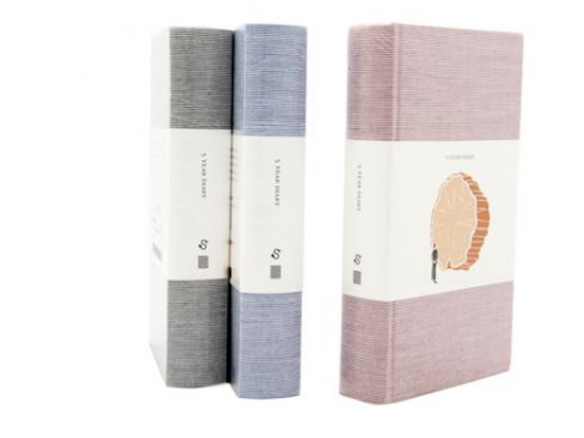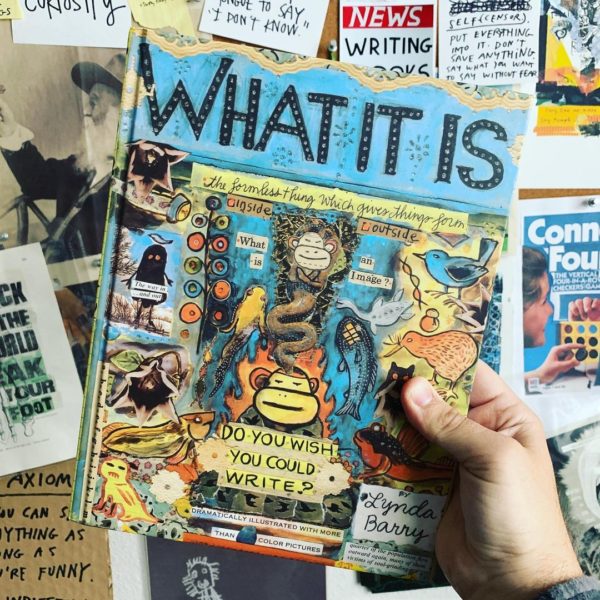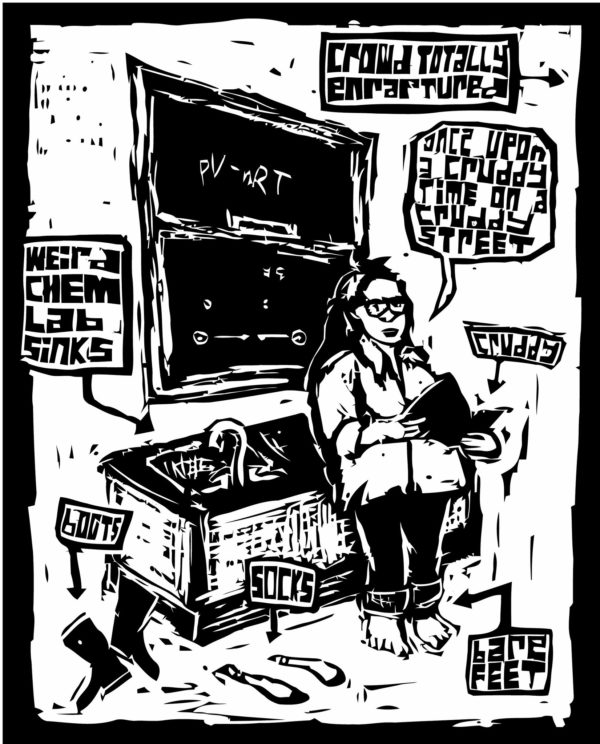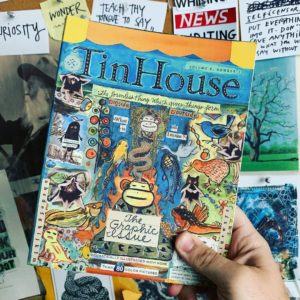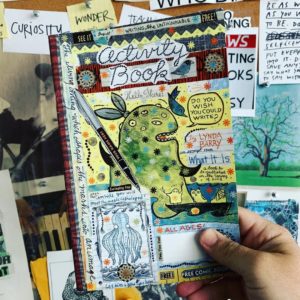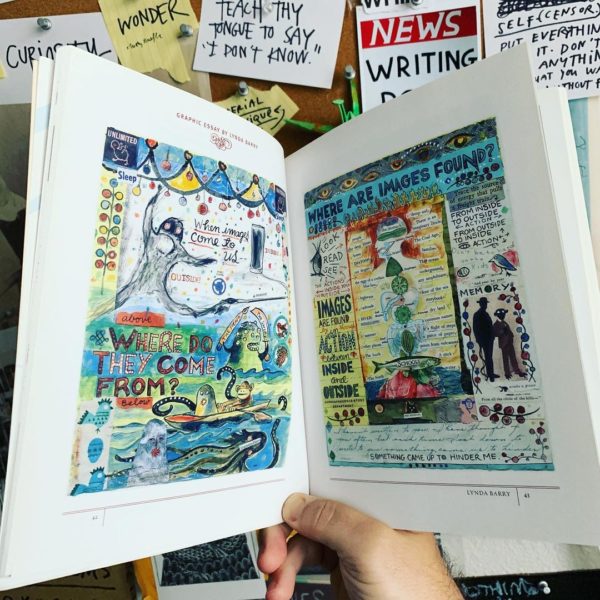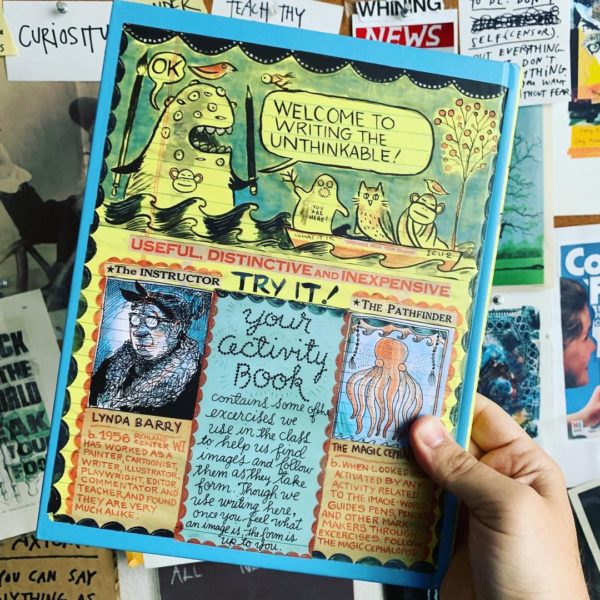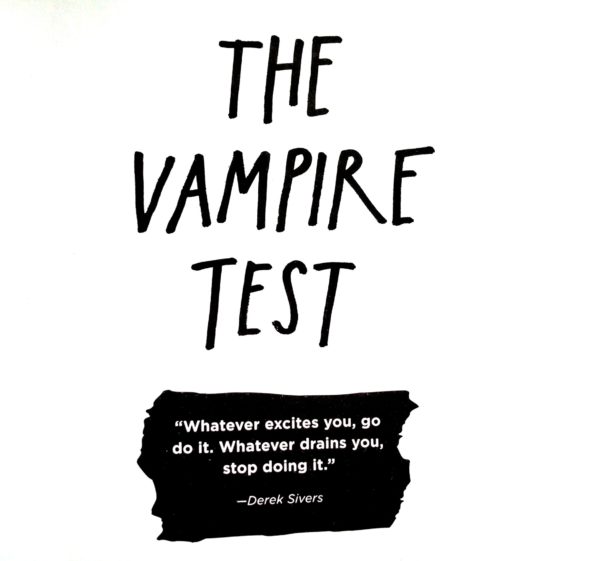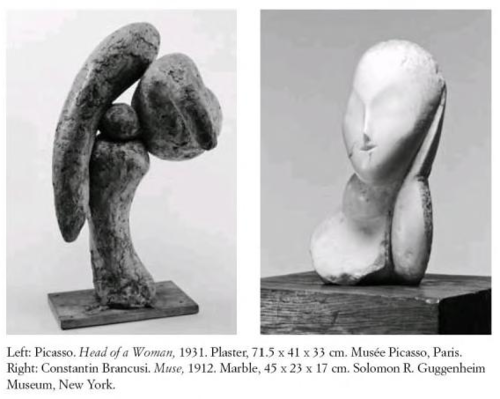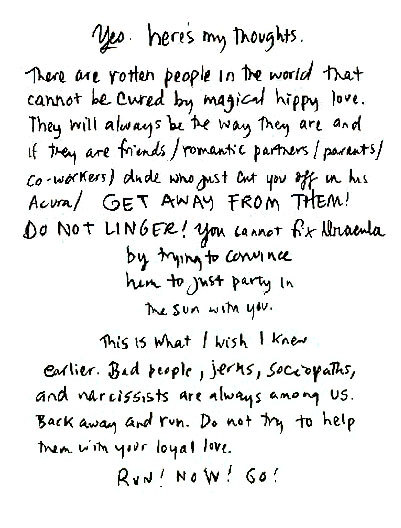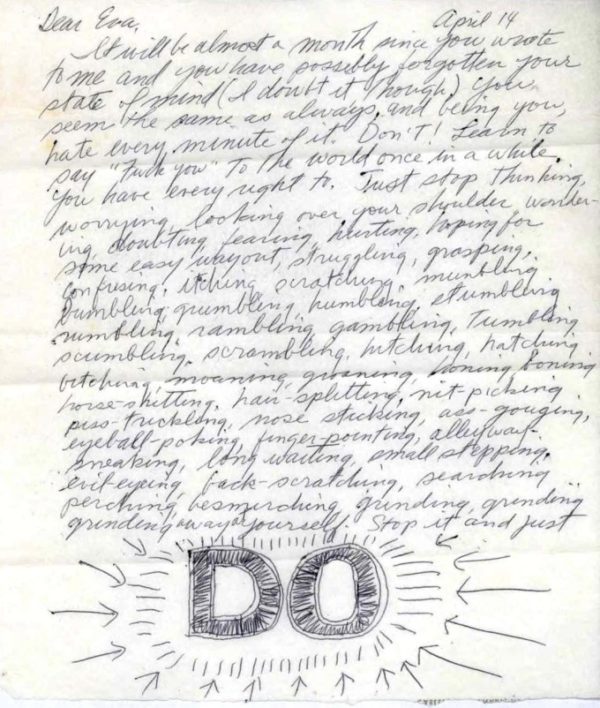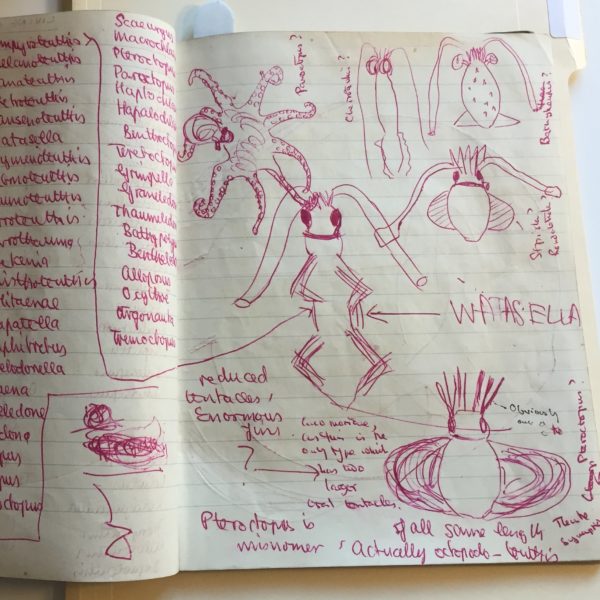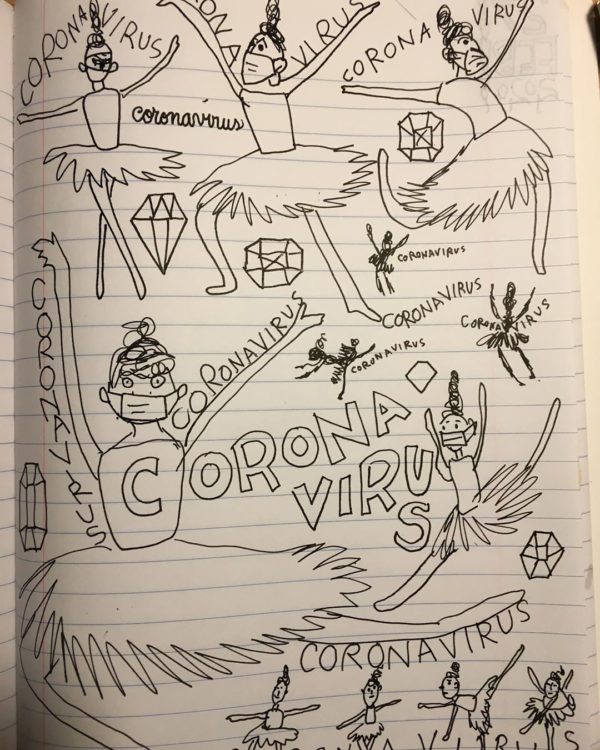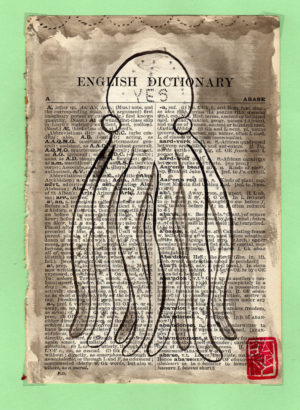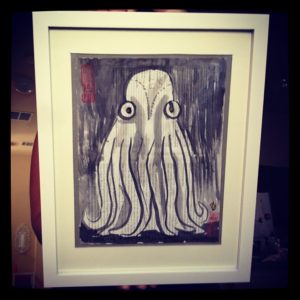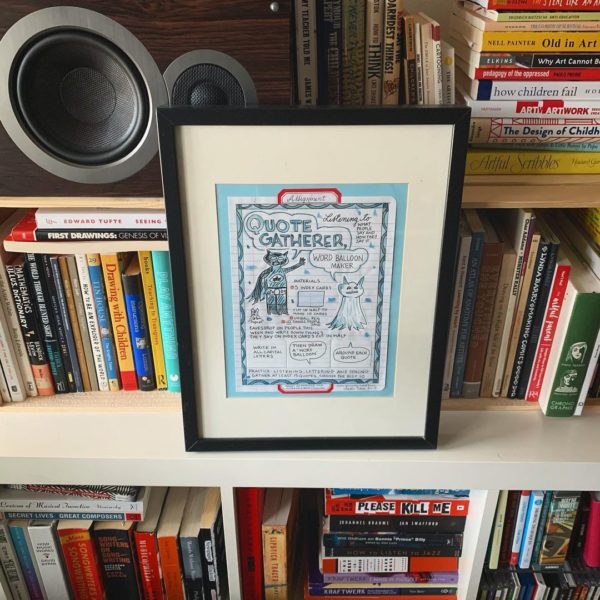
Because yet another notebook is just what I needed in my life (I think that makes 4 daily notebooks), I ordered one of Tamara Shopsin’s lovely 5 year diaries (added to my gear page):
I’ve been using mine not as an actual diary, but as a kind of commonplace book, writing a favorite quote I read or line I hear in it every day, like so:
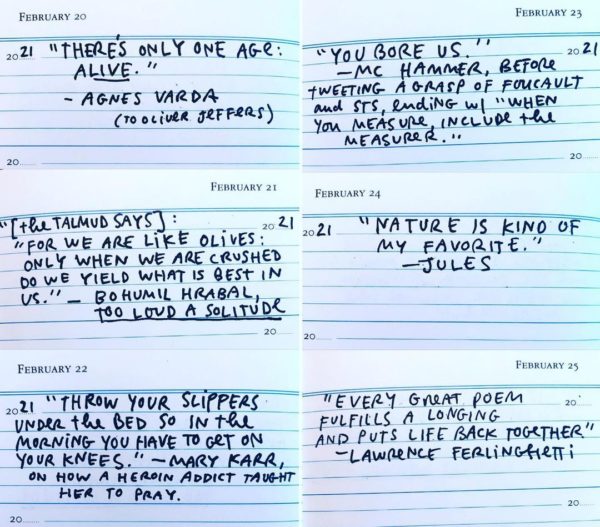
I love books like The Daily Thoreau and Tolstoy’s A Calendar of Wisdom, so this idea (stolen from Dan Pink) instantly appealed to me.
I like flipping back through my entries and seeing if there are any threads or themes that run through the week:
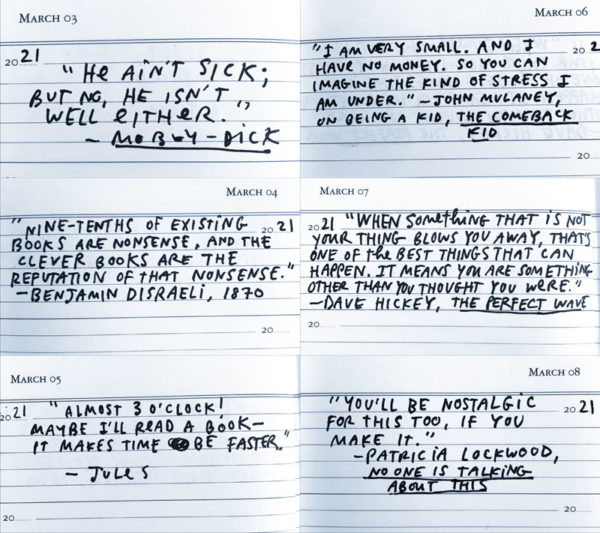
I’m curious to see whether the quotes in the following years will speak to others on the same page, and what kind of juxtapositions will pop up. I could easily see this becoming my most treasured notebook. (You can get one here.)
